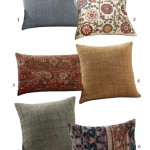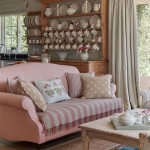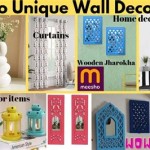Gallery Wall Decor Ideas: Transforming Spaces with Artful Arrangements
Gallery walls represent a dynamic and personalized approach to interior design. They offer a creative outlet to showcase individual tastes, curate collections, and inject personality into any room. The versatility of a gallery wall allows it to seamlessly integrate into diverse spaces, from compact apartments to expansive homes. This article explores various gallery wall decor ideas, providing insights into planning, selecting artwork, and executing an aesthetically pleasing arrangement.
Planning the Gallery Wall: Considerations and Preparation
Before commencing the physical installation of a gallery wall, meticulous planning is crucial. This phase involves assessing the space, defining the desired aesthetic, and gathering the necessary materials. A well-thought-out plan ensures a cohesive and visually appealing final product, minimizing errors and maximizing the impact of the gallery wall.
The first step involves assessing the wall space. Consider its dimensions, color, and any existing architectural features. The size of the wall will dictate the scale of the gallery wall and the number of pieces that can be accommodated. Lighter wall colors provide a neutral backdrop that allows artwork to stand out, while darker walls can create a more dramatic and intimate atmosphere. Architectural elements, such as windows, doors, or fireplaces, should be considered as integral parts of the design, influencing the placement and arrangement of artwork.
Determining the desired aesthetic is paramount. Define the style or theme that the gallery wall should embody. This could range from a minimalist arrangement of black and white photographs to an eclectic mix of paintings, prints, and objects. Identifying a cohesive theme or style will guide the selection of artwork and ensure a harmonious composition. Consider the existing decor of the room and choose a style that complements it, creating a unified and balanced visual environment.
Gathering the necessary materials is an essential step in the planning process. This includes artwork, frames, hanging hardware, measuring tools, and layout aids. Ensure that the frames are in good condition and complement the artwork. Select hanging hardware that is appropriate for the weight and size of the pieces. Measuring tools, such as a tape measure and level, are necessary for accurate placement and alignment. Layout aids, such as paper templates or butcher paper, can be used to visualize the arrangement before committing to hanging the artwork.
Selecting Artwork: Curating a Cohesive Collection
The selection of artwork is a critical aspect of creating a successful gallery wall. A well-curated collection should reflect individual tastes, showcase personal interests, and contribute to the overall aesthetic of the space. Varying the types of artwork, sizes, and framing styles can add visual interest and depth to the gallery wall.
Consider incorporating a diverse range of artwork. This can include paintings, prints, photographs, drawings, and even three-dimensional objects. Mixing different mediums and styles can create a dynamic and engaging visual experience. For example, a gallery wall could combine abstract paintings with vintage photographs and botanical prints. Introducing textures and dimensions through objects like sculptural pieces or decorative plates can further enhance the visual appeal.
Varying the sizes of the artwork is also important. Using a combination of large, medium, and small pieces can create a sense of balance and visual hierarchy. Larger pieces can serve as focal points, while smaller pieces can fill in the gaps and add detail. Arrange the artwork in a way that creates a visual flow, guiding the eye from one piece to the next. Consider the proportions of the wall and choose artwork sizes that are appropriate for the space.
Choosing complementary frames is crucial for unifying the gallery wall. While frames do not need to be identical, they should share a common element, such as color, material, or style. For example, a gallery wall could feature a mix of black frames, gold frames, and wooden frames, as long as they all share a similar aesthetic. Consider the style of the artwork and choose frames that complement it. Minimalist artwork may benefit from simple, understated frames, while more ornate artwork may require more elaborate frames. Consistent matting can also provide a cohesive look.
Arrangement Techniques: Creating Visually Appealing Layouts
The arrangement of artwork on a gallery wall is a critical factor in its overall success. Careful consideration should be given to spacing, alignment, and balance. Several arrangement techniques can be employed to create visually appealing layouts, each with its own unique characteristics and aesthetic qualities.
Symmetrical arrangements offer a classic and balanced look. This technique involves arranging artwork in a symmetrical pattern around a central axis. The pieces are placed in corresponding positions on either side of the axis, creating a sense of order and harmony. Symmetrical arrangements are well-suited for formal spaces and can create a sense of elegance and sophistication. This approach often works well with artwork of similar sizes and styles, further emphasizing the symmetry. To execute this technique effectively, precise measurements and careful alignment are essential.
Asymmetrical arrangements, conversely, provide a more relaxed and eclectic feel. This technique involves arranging artwork in an asymmetrical pattern, with no strict adherence to symmetry. The pieces are placed in varied positions, creating a sense of visual interest and dynamism. Asymmetrical arrangements are well-suited for informal spaces and can create a sense of personality and creativity. This approach allows for more flexibility in the selection and placement of artwork, accommodating a wider range of sizes, styles, and mediums. Balancing the visual weight of different pieces is key to achieving a harmonious asymmetrical arrangement.
Grid layouts offer a structured and organized approach. This technique involves arranging artwork in a grid pattern, with equal spacing between each piece. The pieces are aligned both horizontally and vertically, creating a clean and uniform look. Grid layouts are well-suited for modern spaces and can create a sense of order and efficiency. This approach works best with artwork of similar sizes and styles, further emphasizing the grid pattern. The simplicity of a grid layout can be visually striking, especially when executed with precision and attention to detail.
Organic layouts provide a free-flowing and natural aesthetic. This technique involves arranging artwork in a free-form pattern, with no strict rules or guidelines. The pieces are placed in a way that feels intuitive and organic, creating a sense of spontaneity and creativity. Organic layouts are well-suited for bohemian spaces and can create a sense of warmth and personality. This approach allows for maximum flexibility in the selection and placement of artwork, accommodating a wide range of sizes, styles, and mediums. The key to a successful organic layout is to create a sense of balance and harmony, even without strict symmetry or grid lines.
Hanging the Artwork: Ensuring Proper Installation and Stability
Once the arrangement has been finalized, the next step is to hang the artwork on the wall. Proper installation is crucial for ensuring the stability and longevity of the gallery wall. Accurate measurements, appropriate hanging hardware, and careful execution are essential for achieving a professional and secure result.
Accurate measurements are paramount for achieving a level and aligned gallery wall. Use a tape measure to determine the exact placement of each piece. Mark the location of the hanging hardware on the wall using a pencil. Double-check the measurements to ensure accuracy. Misaligned artwork can detract from the overall aesthetic of the gallery wall. A laser level can be beneficial for ensuring horizontal alignment across multiple pieces.
Selecting the appropriate hanging hardware is crucial for ensuring the stability of the artwork. Consider the weight and size of each piece when choosing the hardware. For lighter pieces, small nails or picture hooks may suffice. For heavier pieces, use screws or anchors that are designed to support greater weight. Ensure that the hardware is securely attached to the wall. Test the stability of each piece before moving on to the next. The use of drywall anchors is often necessary to securely attach artwork to drywall surfaces.
Proper spacing between pieces is essential for creating a visually balanced gallery wall. Aim for consistent spacing between each piece, typically ranging from 2 to 4 inches. Use a ruler or spacer to ensure uniform spacing. Avoid overcrowding the artwork, as this can create a cluttered and overwhelming look. Conversely, avoid leaving too much space between the pieces, as this can make the gallery wall feel disjointed. The spacing should be visually pleasing and allow each piece of artwork to stand out individually while still contributing to the overall composition.
Before hammering or drilling into the wall, consider using painter's tape to mark the placement of each piece. This allows for easy adjustments and prevents damage to the wall. Once the placement is finalized, carefully hammer or drill the hanging hardware into the wall. Ensure that the hardware is securely in place before hanging the artwork. After hanging each piece, use a level to ensure that it is straight. Make any necessary adjustments to achieve perfect alignment. Taking the time to plan and execute the installation carefully will result in a gallery wall that is both aesthetically pleasing and structurally sound.

How To Create A Gallery Wall Guide Best Ideas Crate Barrel

How To Make A Gallery Wall Selecting Arranging Layout Ideas Studio Diy

8 Artful Ideas For Gallery Wall Arrangements

Living Room Gallery Wall Love Grows Wild
:max_bytes(150000):strip_icc()/art-0d77b40460a548b0ba8979f295e1c663.jpg?strip=all)
60 Gallery Wall Ideas To Make The Most Of Your Space

Easy To Do Gallery Wall Ideas Grow Beauty With Ease

8 Artful Ideas For Gallery Wall Arrangements
:strip_icc()/102670015-0933d0d431c446ee87dd20d8259ee450.jpg?strip=all)
38 Gallery Wall Ideas That Feel Modern And Timeless

Wall Art Ideas The Home Depot

7 Smart Strategies For Creating A Stylish Gallery Wall
Related Posts







